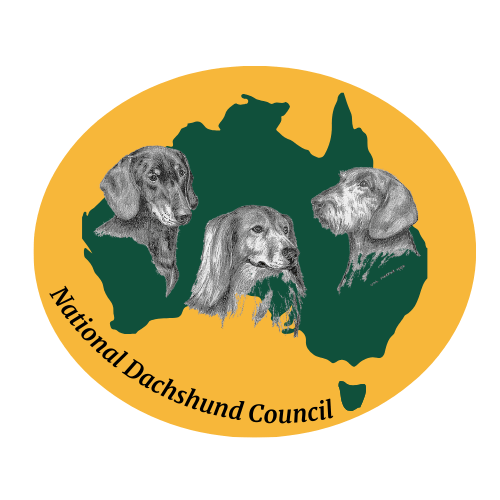What is Lafora’s Disease?
Lafora’s Disease is an inherited form of epilepsy that affects Miniature Wirehaired Dachshunds in particular. It can also affect Bassets, Beagles and on rare occasions has been reported in Miniature Poodles, Standard Poodles, Pointers & Corgis. The condition typically only becomes apparent from the age of 5 to 7 onwards and can take the form of major fitting, jerking of the head, apparent blindness, dementia and unsteadiness on the feet. Dogs that are “Affected” by the disease, or are “Carriers” of the genetic mutation, are at risk of producing more “Affected” puppies if they are bred from with others carrying the mutation.
History of Lafora’s Disease
Lafora’s disease was first recognised and described by veterinary neurologist Dr Sue Fitzmaurice in the UK in 1996. Dr Clare Rusbridge a veterinary-neurologist in the UK diagnosed a few cases and, anxious to find a better treatment for them, read the human literature on this rare disease. She read about the work of the eminent scientist and neurologist Dr Berge Minassian in Canada who was researching Lafora’s disease in children, which in humans is a terminal disease. Dr Minassian’s work had already discovered two distinct genetic mutations causing Lafora’s in humans.
Sue Fitzmaurice and Clare Rusbridge collated their clinical information and arranged for DNA samples to be sent to the Toronto Hospital. Subsequently Dr Minnasian was able to determine that the dogs did not have the human mutation. However it did mean considerably more work as to find the genetic mutation in the dog would require extensive familial studies and therefore help from dog breeders.
In 2002 Dr Minassian visited the MWHD Breed Club in the UK. Subsequently, several breeders provided pedigree information and DNA samples from their dogs. Finally in 2005 the Toronto based team was able to announce to the world that the genetic mutation causing the disease in MWHD and the Basset Hound had been discovered (BBC News Friday, 7 January 2005)
The Genetics of Lafora’s
The Toronto Hospital for Sick Children, with support from Dr. Clare Rusbridge in the UK, identified Lafora’s as an inherited autosomal recessive disease. An autosomal recessive disorder means two copies of an abnormal gene must be present in order for the disease or trait to develop. It appears likely that canine Lafora’s first appeared in the Mini Wire Dachshund population in the UK as the result of a genetic mutation. This means that a dog must have two of the mutated genes, one from each parent, to be clinically “Affected”.
If a dog has only one mutated Lafora’s gene, it will be a “Carrier”. It will not become clinically affected by the disease but, if bred to another “Carrier” or “Affected” dog, some of the puppies born will be likely to receive the two mutated genes and thus be clinically affected.
Can Lafora’s be Treated?
Not all dogs with Lafora’s disease will need medication. Anti-Epileptic drugs can be used but not all Lafora’s dogs will respond.
Lafora’s disease is caused by excess storage of a starch like compound, polyglucosan in the nerve cells. There is evidence that a low GI index diet improves dogs with Lafora’s. Many proprietary dog foods are low in carbohydrates. Never give a Lafora’s affected dog Starchy or Sugary treats as this could aggravate the disease. Lafora’s dogs can suffer from stress, anxiety and fitting can be triggered by sunlight or bright flashing lights.
The Benefits of Testing
The Wire Haired Dachshund Club’s screening programme identified approx. 10% “Affected” Miniature Wire Haireds. This could mean that over half the UK Mini Wire population is carrying the Lafora’s mutation. Because the disease is “late onset” most dogs will have been bred from before they exhibit any symptoms. The only way to avoid breeding “Affected” Mini Wires is to use the full DNA test to screen all breeding stock, prior to mating. Dogs known to be “Affected” should only be mated to a “Clear” dog if necessary. The offspring will all be “Carriers” and they should only be mated back to a “Clear” dog. “Clear” dogs can be safely mated to “Carriers”, but are likely to produce further “Carrier” offspring.
DNA Testing for Laforas in Miniature Wire Haireds can now identify Clear, Carrier, and Affected Dogs.
Tests Database & Lafora’s Testing Procedures
When submitting your test results for this database please email them to marshlisa2@gmail.com. A photocopy of the Dog’s Pedigree and a photocopy of the Test Certificate is required.
| TEST | RESULTS |
|---|---|
| LAFORA’S DISEASE Test results | CLICK HERE |
